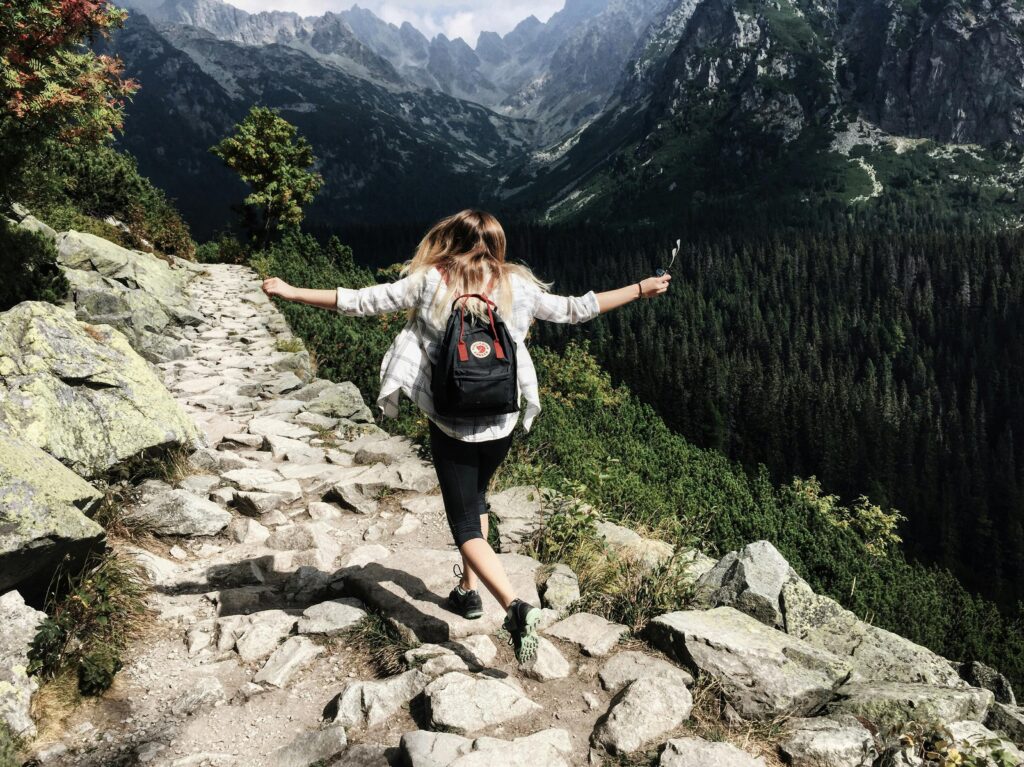Ready to lace up and hit the trails? Hiking is one of the most rewarding ways to connect with nature, boost your fitness, and clear your mind. But for beginners, stepping into the world of hiking can feel overwhelming. This comprehensive guide covers everything you need to know—essential tips, must-have gear, and safety practices—to help you start your hiking journey with confidence.
Why Hiking Is the Perfect Outdoor Adventure for Beginners
Hiking is accessible, affordable, and offers countless benefits. It improves cardiovascular health, builds muscle strength, reduces stress, and connects you with the natural world. Unlike many sports, you don’t need expensive equipment or years of training—just a sense of adventure and a willingness to learn3.
1. Choosing the Right Trail
Start Small and Simple
The biggest mistake beginners make is choosing hikes that are too long or too steep. Start with trails under 5 miles (8 km) and minimal elevation gain. Flat or gently rolling trails are perfect for your first few outings118.
Research Your Route
Use trail guidebooks, websites, or apps to find beginner-friendly hikes. Look for details on distance, elevation, trail conditions, and features like water sources or rest areas. Read recent reviews for up-to-date info on trail conditions118.
Check the Weather and Season
Always check the weather forecast before heading out. Avoid hiking in extreme heat, storms, or icy conditions. Some trails may be inaccessible in winter or during rainy seasons318.
2. Essential Hiking Gear for Beginners
Footwear: Your Most Important Investment
- Hiking Shoes/Boots: Choose comfortable, supportive shoes with good grip. Trail running shoes or light hiking boots are great for most beginners. Make sure they’re broken in to avoid blisters6818.
- Socks: Wear moisture-wicking, synthetic, or wool socks. Avoid cotton, which can cause blisters818.
Clothing: Dress for Comfort and Weather
- Base Layer: Moisture-wicking shirts and leggings or shorts.
- Mid Layer: Fleece or light jacket for warmth.
- Outer Layer: Waterproof and windproof jacket.
- Accessories: Hat, gloves, and sunglasses for sun or cold protection28.
Backpack Essentials
- Backpack: A small daypack (15–25 liters) is usually enough for short hikes714.
- Water: Carry more than you think you’ll need (at least 0.5–1 liter per hour of hiking)19.
- Snacks: Bring energy-rich foods like nuts, fruit, granola bars, or sandwiches719.
- Navigation Tools: Map, compass, or GPS. Don’t rely solely on your phone—batteries can die or signals can drop71118.
- First Aid Kit: Include bandages, antiseptic wipes, blister treatment, pain relievers, and any personal medications51517.
- Sun Protection: Sunscreen, sunglasses, and a hat5719.
- Bug Protection: Insect repellent and, if needed, tick removal tools716.
- Emergency Gear: Whistle, headlamp or flashlight (with spare batteries), and a multi-tool or knife57141519.
- Rain Gear: Lightweight poncho or rain jacket28.
- Extra Layers: Temperatures can change quickly, especially in mountains or forests28.
Optional but Helpful
- Trekking Poles: Help with balance and reduce strain on knees, especially on hilly or uneven terrain911.
- Camera/Binoculars: For wildlife and scenic views.
- Portable Charger: For your phone or GPS13.
3. Safety First: Hiking Practices for Beginners
Plan and Share Your Itinerary
- Always let someone know your hiking plans—where you’re going, your route, and when you expect to return. This is crucial in case of emergencies10111720.
- Consider hiking with a friend or group, especially for your first hikes. There’s safety and support in numbers101117.
Stay on Marked Trails
- Stick to marked and well-maintained trails to avoid getting lost and to protect the environment1617.
- Pay attention to trail signs and markers.
Pace Yourself
- Start slow and take breaks as needed. Remember, the distance you hike in, you must hike out111.
- Listen to your body. If you feel tired, dizzy, or unwell, turn back.
Be Aware of Hazards
- Watch for slippery rocks, loose gravel, and roots.
- Avoid hiking near cliffs or in hazardous weather.
- Be cautious around wildlife—never feed or approach animals16.
- Learn to identify and avoid poisonous plants like poison ivy or oak16.
Hydration and Nutrition
- Drink water regularly, even if you’re not thirsty. Dehydration can sneak up quickly, especially in hot or high-altitude conditions19.
- Eat small snacks throughout your hike to maintain energy.
Leave No Trace
- Carry out all trash, respect wildlife, and stay on trails to minimize your impact on nature118.
- Avoid picking plants or disturbing animals.
4. Mindset and Preparation
Embrace the Journey
- Focus on enjoying the experience, not just reaching the destination. Hiking is about connecting with nature and yourself4.
- Don’t compare yourself to others—every hiker starts somewhere.
Overcome Fears and Build Confidence
- Break hikes into manageable sections. Celebrate small wins, like reaching a viewpoint or completing your first mile4.
- If you’re nervous, start with easy, well-trafficked trails and gradually progress to more challenging ones.
Know Your Limits
- Assess your fitness level honestly. Start with shorter, flatter hikes and work up to longer or steeper routes as your stamina improves11118.
- If you feel pain or discomfort, don’t push through—rest or turn back.
5. Common Beginner Mistakes and How to Avoid Them
- Wearing the wrong shoes: Invest in proper hiking footwear and break them in before your first hike68.
- Not checking the weather: Always check the forecast and pack accordingly318.
- Underestimating water and snacks: Bring more than you think you’ll need19.
- Ignoring navigation: Don’t rely solely on your phone; carry a map and compass71118.
- Overpacking: Only bring what you need—every extra pound adds up over miles13.
- Forgetting sun and bug protection: Sunburn and insect bites can ruin a hike716.
6. Building Your Hiking Skills
- Practice on different terrains: Try local parks, hills, or forests to get used to varied conditions13.
- Join hiking groups: Local clubs or online communities offer support, advice, and companionship12.
- Learn basic first aid: Knowing how to treat blisters, minor cuts, or sprains is invaluable51517.
- Read trail reports: Check for recent updates on trail conditions, closures, or hazards118.
7. Sample Beginner Hiking Checklist
Essentials:
- Comfortable hiking shoes/boots
- Moisture-wicking socks and clothing
- Weather-appropriate layers
- Backpack (15–25L)
- Water (at least 1–2 liters)
- Snacks (nuts, fruit, bars)
- Map and compass/GPS
- First aid kit
- Whistle, headlamp/flashlight, multi-tool
- Sun protection (sunscreen, hat, sunglasses)
- Bug spray/insect repellent
- Rain jacket/poncho
- Extra clothing
- Emergency contact info
8. The Benefits of Hiking
- Physical Health: Improves heart health, builds muscle, burns calories, and strengthens bones3.
- Mental Health: Reduces stress, boosts mood, and provides a sense of accomplishment3.
- Connection: Offers time away from screens, reconnects you with nature, and can be a social or solo adventure.
Final Thoughts: Your First Steps Into Hiking
Hiking is a journey—one that starts with a single step. By choosing the right trail, preparing your gear, and prioritizing safety, you’ll set yourself up for a rewarding and enjoyable outdoor experience. Remember, every hiker was once a beginner. The most important thing is to get out there, explore, and enjoy the adventure.
What’s your biggest hiking question or first trail story? Share in the comments to help and inspire fellow new hikers!


